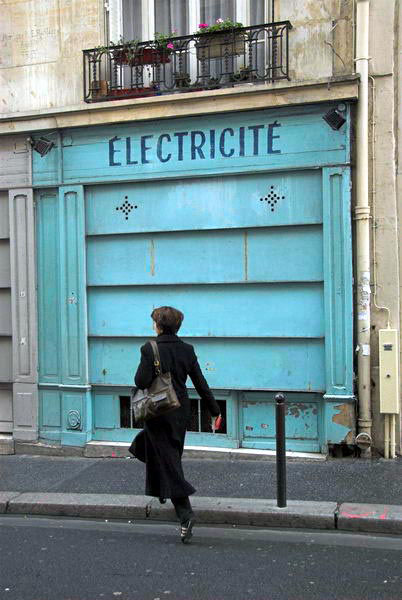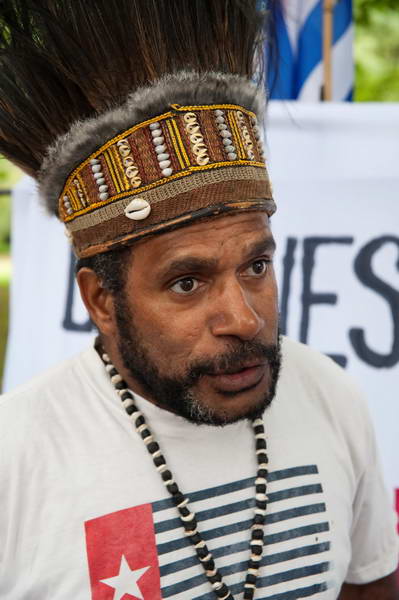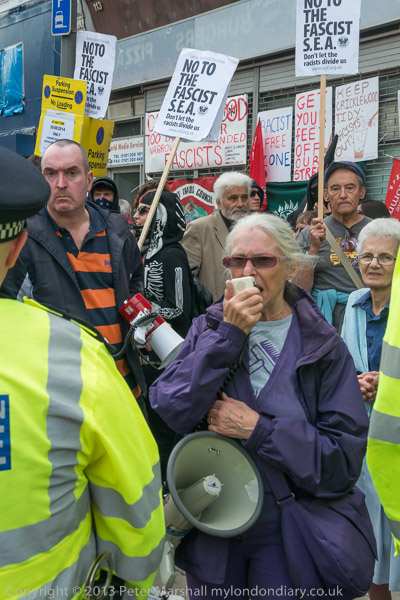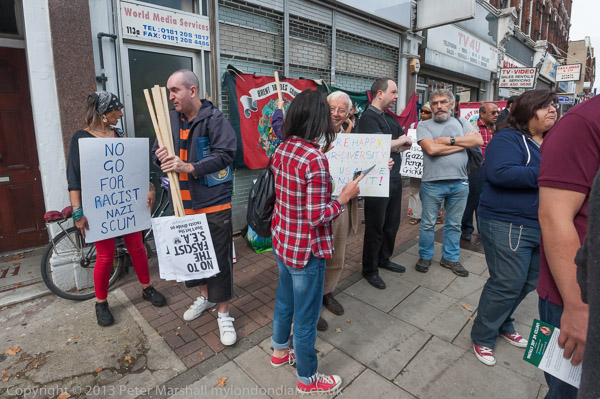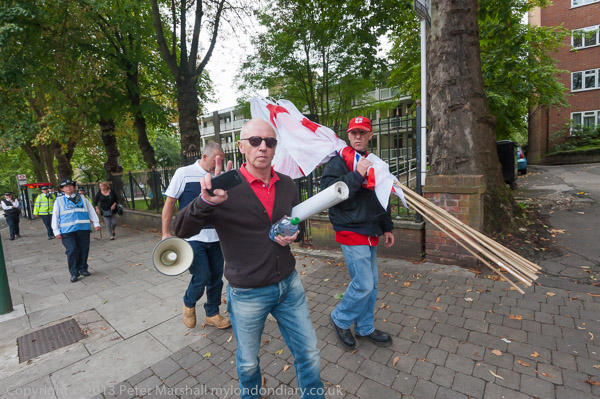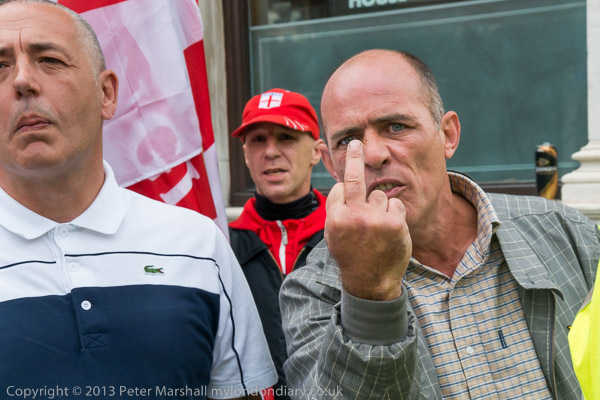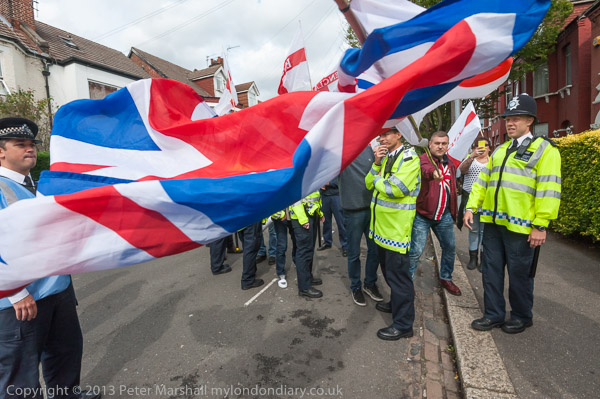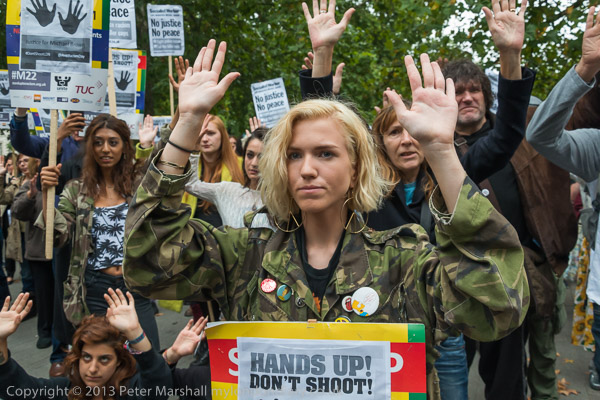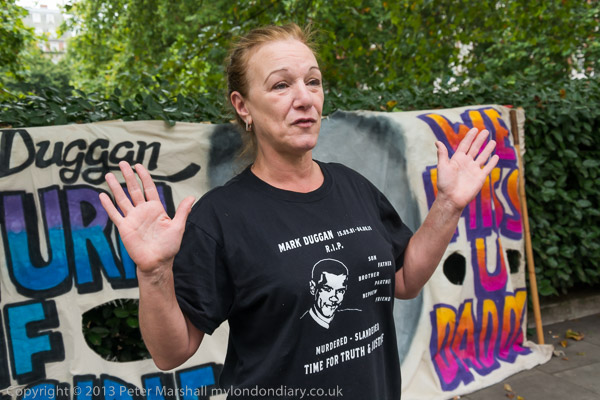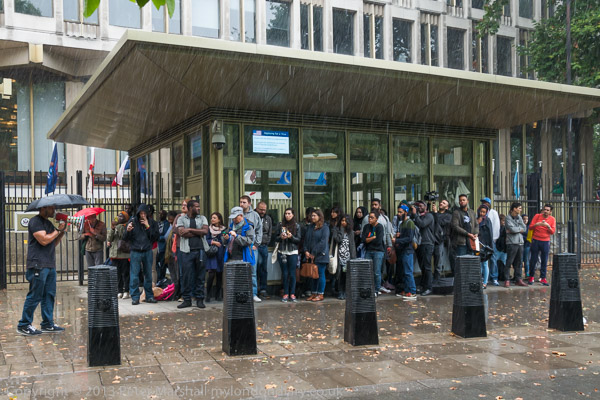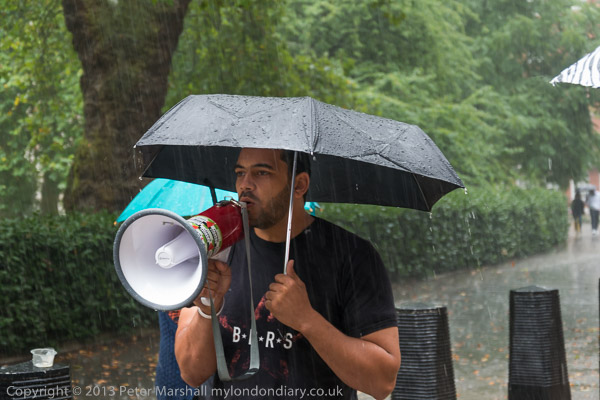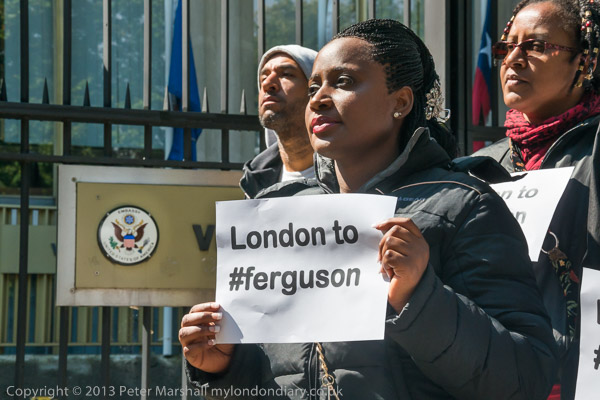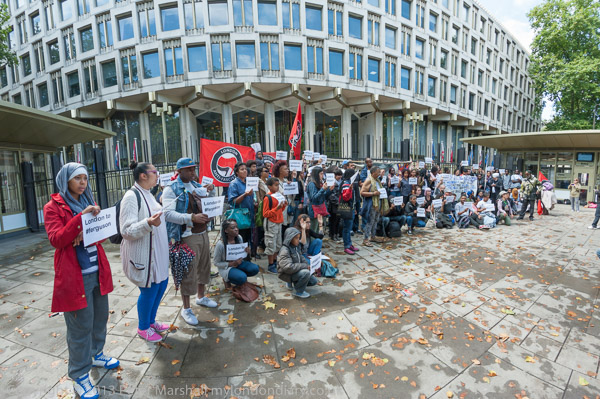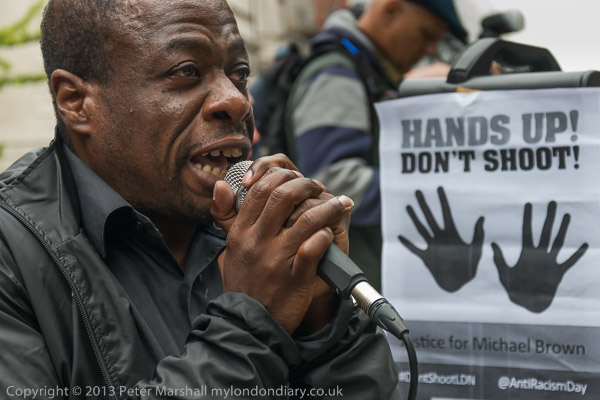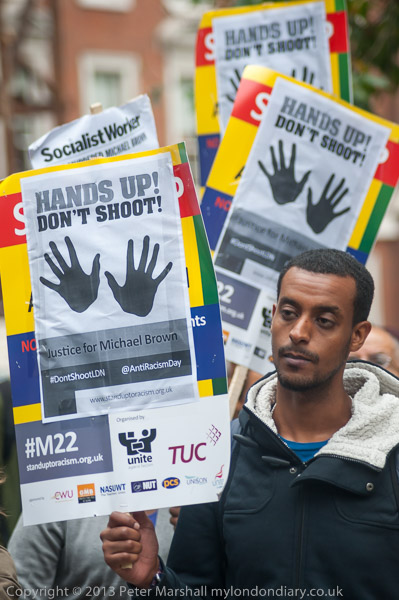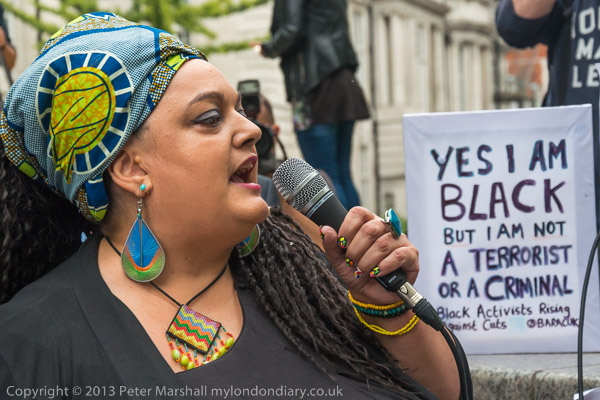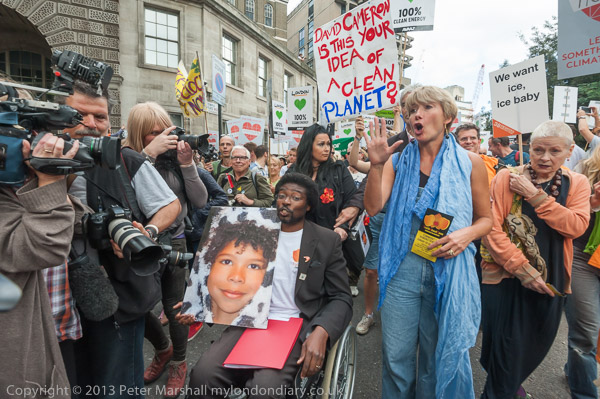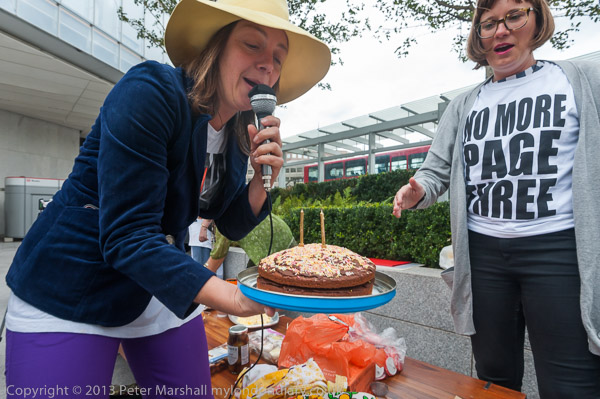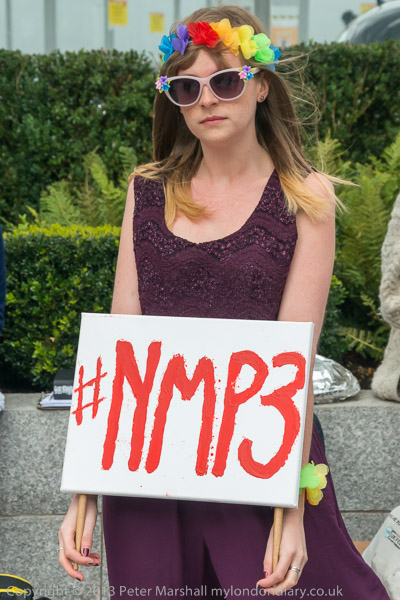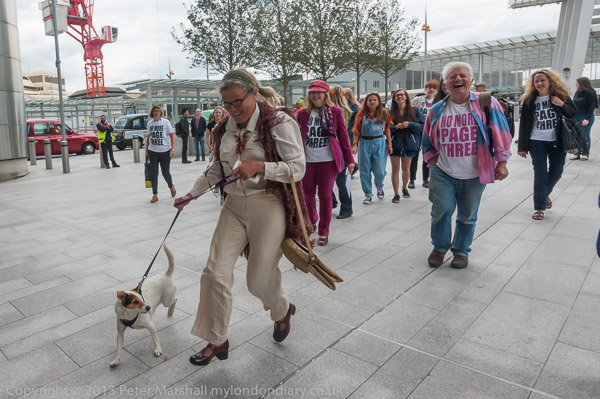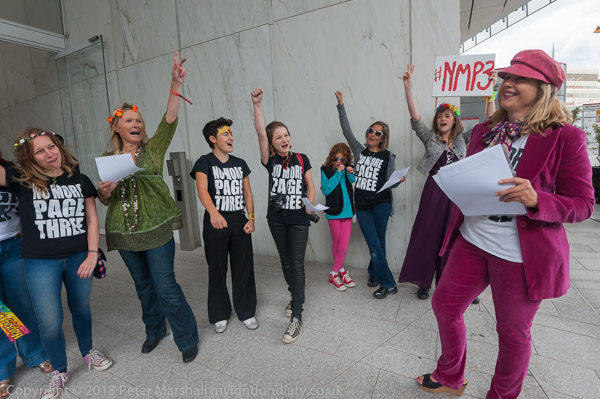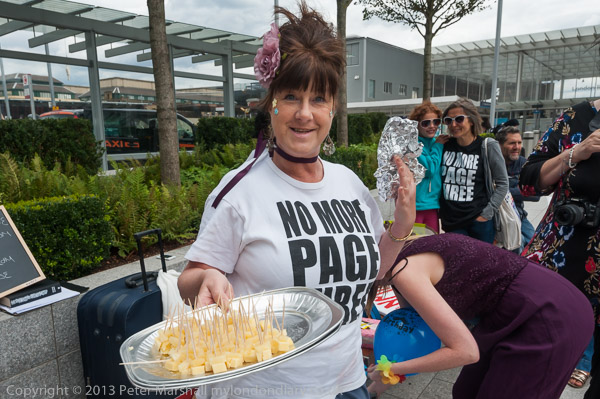Godfrey Thurston Hopkins, graphic artist, photographer and painter who was born 16 April 1913 died earlier this week on 26 October 2014, aged 101. You can read his obituary in The Guardian and others elsewhere, and see pictures in the Getty Image Gallery, Corbis etc.
In 2006 I tidied up my notes, added a few biographical details and published the following essay on Thurston Hopkins, which circulated widely to those with an interest in photography around the world, getting several hundred thousand views. Outside of the UK his work – and British photography in general, including the Picture Post were not very well known. Other than removing a couple of links that no longer work, updating some others and correcting a couple of trivial spelling errors, I have made no corrections to the piece.
==================================
Early Years
Always known as Thurston Hopkins, few realise that Thurston is actually part of his family name. He stopped using his first name at an early age (there is now even some confusion as to whether it was Godfrey or the unusually spelt Geofrey.) He is always know to friends, family and the many admirers of his work as Thurston.Geofrey Thurston Hopkins has perhaps a more English-sounding ring, one that would have fitted neatly into the ranks of gentlemen (not players) in the county cricket teams of the 1930s. It was normal at the time (and remains the practice at more elite schools) to call boys by their surnames. This was universal among masters and also generally adopted by the boys among themselves unless some more suitable and usually derogatory nickname suggested itself. Perhaps he became used to being called ‘Thurston Hopkins’ during his schooldays and simply carried it on into later life.
Robert Thurston Hopkins
His father, Robert Thurston Hopkins, (1884-1958), was a prolific author, writing topographical works, ghost stories and much more, including biographical works on such great British figures as Oscar Wilde, H G Wells and Rudyard Kipling. His 1935 book ‘Life and Death at The Old Bailey’ is often quoted in discussions of the identity of the infamous London serial killer ‘Jack The Ripper’. Much of his work was related to the English countryside, with books on Sussex, where the family lived, and Cornwall, as well as several on London. He also wrote some of the early classics of industrial archaeology, on windmills and watermills, as well as the ‘Moated Houses of England’, published by Country Life in 1935. One of his other works was the ‘Every Boy’s Open Air Book’ of 1925.
Early Work
The young Hopkins liked to draw, and after studying at Brighton College of Art, in Sussex, began work as a graphic artist. In his younger years he apparently helped with some of his father’s books. There is one rare volume (I’ve not seen a copy), ‘Literary Originals of Sussex’, published by Alex J Philip in Gravesend in 1936, that gives as joint authors G & R Thurston Hopkins. He also started to take pictures, largely teaching himself photography. Apparently he took some of the photographs for his father’s books. There is a single rather ordinary example of a windmill picture in a very large page slow loading page with many other windmill pictures and texts with the credit ‘Thurston Hopkins’.
PhotoPress
It took the abdication of the British King to finally push Hopkins completely into photography. He had been working for a publisher adding decorative frames to portraits of Edward VIII when the king announced his decision to give up the throne on December 10, 1936. It was a decision that doubtless made Wallis Warfield Simpson happy but Thurston Hopkins redundant. His employer told him he would find it easier to earn a living from photography, and he took the advice, joining the PhotoPress Agency
Cameras
First Camera
His first camera was a Goerz Anschutz. The Goerz company was founded in Berlin, Germany where it began making cameras in 1887. By 1911 they also had a factory in London, and also branches in Paris, Riga, Bratislava, Vienna and the USA. In 1926 the German company joined with Contessa Nettel, Heinrich Ernemann AG and Ica to form Zeiss Ikon, but the overseas companies – such as C.P.Goerz American Optical Co continued to trade independently. Goerz were probably best known for their Dagor lenses, produced in the US in the 1950s.
Ottomar Anschutz
The Goerz Anschutz camera was commonly used by press photographers in the early years of the 20th century, and was a folding strut device, usually taking ‘half-plate’ images. It took its name from Ottomar Anschutz (1846-1907), inventor of the focal plane shutter. Anschutz was also one of the pioneers of the photography of movement, producing images similar to those of Edward Muybridge. He also made an early movie projector, the Electrical Tachyscope, which used a Geissler flash tube.
Focal Plane Shutter
The camera was of course fitted with Anschutz’s patent focal plane shutter. Rather than being marked with shutter speeds like a modern camera, this had a piece of string to adjust the distance between the two travelling blinds that started and finished the exposure and a ten position knob which was used to alter the tension of the spring that powered them. Its adjustment was a matter of experience and rule of thumb rather than science. Focus for rapid press use was by scale, with the photographers making their own markings on the camera for the distances they used. The image could be examined on a ground glass screen in place of the plate when time allowed precise focus. These relatively primitive cameras demanded skill and experience from the operator to get good negatives, especially without the aid of an exposure meter. Many of the plate negatives from the era are extremely overexposed by modern standards.
Miniature Cameras
There were far more convenient cameras available, including the ‘medium format’ Rollei twin lens reflex and 35mm cameras such as the Leica and Contax. However the ‘miniature’ negatives produced by these relatively expensive cameras were not generally considered useful for reproduction. [p} An exception to this in the 1930s was in photojournalism and newspaper work in the hands of pioneers such as Humphrey Spender and Bert Hardy. In the USA, the young W Eugene Smith was sacked by Newsweek in 1937 for using a miniature camera.
Leica
A few years later, when Hopkins was serving in the RAF Photographic Unit during the Second World War in Italy he acquired a Leica. It was the first camera he ever felt at home using, and apart from a few pictures with a Rollei, he seldom used anything else for the rest of his career.
Post War
Demobbed
After being demobbed, Thurston Hopkins hitchhiked around Europe for a while taking photographs, and then worked for Camera Press, the agency founded in London in 1947 by Tom Blau and still going strong.
Picture Post
Like many other photographers of the era, his ambition was to work for the magazine ‘Picture Post‘, founded in 1938 with Hungarian émigré Stephan Lorant (1901-97) as editor. Assisting him was Tom Hopkinson (1905-90), who took over as editor when Lorant went to the USA in 1940. The magazine was funded by publisher Edward Hulton, and was a more or less instant success – within a few issues it had a circulation of over a million. Hopkinson and Picture Post played a major part in creating a sense of national identity during the war, and played an important role in the developments leading to the setting up of the welfare state, not least through the many features that illustrated social inequalities.
Post Photographers
Photographers working for Picture Post included many of the leading names of the day – Bert Hardy, Kurt Hutton, Humphrey Spender, and, occasionally, Bill Brandt. Thurston Hopkins apparently persuaded Picture Post that he was a suitable photographer for them by making up a dummy of an entire issue from his own pictures and text. He started work for them in 1950, and continued until the magazine finally collapsed, following a gradual decline in readership and competition for advertising with commercial television, in 1957.
Grace Robertson
Another photographer who submitted pictures to Picture Post and was offered work at more or less the same time went under the name of Dick Muir. Women photographers were almost unheard of at the time and to get her work considered Grace Robertson had to use a male pseudonym. Born in 1930, she taught herself photography at the age of 17, joined Simon Guttman‘s ‘Report‘ agency a couple of years later and worked frequently for Picture Post. Guttman was a legendary figure in the development of photojournalism, discovering and promoting many of the best photographers; while running ‘Dephot’ in Berlin he lent his young darkroom assistant Andre Friedmann a Leica, beginning the career of the great Robert Capa.
Love and Marriage
Robertson and Hopkins were married, and still live together in a picturesque cottage in the pleasant and rather sleepy small Sussex seaside town of Seaford. This area is sometimes known as England’s Costa Geriatrica; my own father retired to spend his last fifteen years in Seaford. Robertson’s book ‘A sympathetic Eye‘, published in 2002, has done much to bring her work back to public attention. It includes both a picture of her daughter Joanna in 1965 and her granddaughter Cressida in 1998, along with several memorable picture stories used by Picture Post, including one of women from a Bermondsey pub making their annual day trip to the seaside in 1954. Life magazine liked the story so much they got her to make a repeat feature of a similar group two years later.
Later Life
When his job at Picture Post came to an end, Thurston Hopkins set up a studio in Chiswick, and for ten years was one of London’s more successful advertising photographers. He then changed track and turned to education, teaching on the photography course at the Guildford School of Art, which had become one of the major British centres for the teaching of photography under Ifor Thomas. Now long retired, Hopkins spends much of his time painting, although Robertson continues to photograph.
Hopkins & Picture Post
More than a Magazine
Picture Post was more than a magazine, it had become a part of the British way of life during the Second World War and the immediate post-war years. It was read by many more than the respectable circulation figures indicate, with copies passed around family and friends, including many who could not afford their own copies. It represented and mirrored the feelings of the people living together under the blitz and fighting to defeat fascism. Its editorial stance was very much on the liberal left, humanist, populist and campaigning, and many stories dealt with issues that were close to the heart of ordinary working people, illustrating them with images of people like them who they could feel close to.It was a stance that was most clearly echoed in the work of its chief photographer, Bert Hardy. It was also part of a culture we see clearly in the classic British films of the era, such as ‘Passport to Pimlico'(1949). Picture Post would surely have been the house journal of that plucky independent state of ‘Pimlico-Burgundy’.
Thurston Hopkins perhaps provided a slightly more thoughtful and reserved approach to issues than his colleagues on the magazine, although like the other photographers, he was very dependent on the stories assigned to him as well as his own suggestions.
Cats of London
One of the first essays by Hopkins published in Picture Post was his ‘Cats of London (24 Feb 1951 edition), almost certainly suggested by the many cats he met while walking around the streets of London on other assignments. The blitz had made many cats homeless, and these strays had often established themselves in the bombsites, living and breeding more or less wild on the scraps the could find and that friendly neighbours put out from them.Even cats who still enjoyed good homes would spend much of their time on the streets; the cat flap was as yet unknown and every cat owner still ‘put the cat out’ as part of the ritual of retiring for the night. City cats were still street cats first and home cats when it pleased them. Hopkins started to collect pictures of these cats on the street, attracting them with a little food, and it made an interesting if not profound story.
La Dolce Vita
His best known picture however stars not a cat but a poodle. He had noticed the dog in a limousine belonging to a hire car firm, and went to talk to the driver. It turned out that the driver was both the owner of the hire car company and the dog, and often drove him around in the car as a joke. Hopkins asked the driver to pose for him with the dog sitting alert and upright in the seat next to him, just like a dowager. Entitled ‘La Dolce Vita, Knightsbridge, London, 1953‘ the picture has been widely reproduced over the years and sold as a popular poster.
Liverpool
The decline of Picture Post was clearly indicated by the fate of the story by Hopkins on Liverpool, arguably his finest work. Taken in 1956, it showed the people of the city living in slum properties with few possessions, through a series of powerful images.A child peers from the corner of a broken window; a woman washes her face sitting crouched over a bowl of water on a newspaper covered kitchen table, her breakfast cup and plate still on it, an older woman stands among scattered sheets of newspaper in the desolate infinity of an alleyway between the walled yards of back to back streets, clutching a few packets to her breast., desolate and desperate. A child tries to sleep on a sparse bed below a dirty blanket. Covering this are sheets of newspaper, probably more to protect the blanket from falling plaster and drips of water than to keep her warm.
Spiked
The city fathers protested to the proprietor, Edward Hulton about this indictment of conditions in their city. He put pressure on the editor (no longer Tom Hopkinson, who had left the magazine several years earlier following the dispute with Hulton over his printing of a report by Bert Hardy and journalist James Cameron on the mistreatment of prisoners in the war in Korea) and the story was dropped. Twenty years later, other photographers, including Paul Trevor, went back to Liverpool and found little had changed.
More Features
Street Games
Another fine Hopkins feature – fortunately published – was of children playing in the street; its aim was to support the provision of less dangerous play areas and activities. These pictures appeal to me partly for personal reasons, as I can see myself in many of the young kids he found; I was of an age with them, played on the streets much as they did, wore the same uniform of short trousers and shirts and pullovers (though mine were more untidy, worn and darned than most in his pictures.) His work shows an impressive ability to get to know these children well enough to produce images that look entirely natural, although we often know that some have been set up and posed by him. In perhaps the most graphic of them, a small face with a feathered ‘Indian’ headdress pops up from a coal-hole in the pavement in the foreground and takes aim at the photographer with his six-shooter, while his friends down the street look on.
Christmas in Pimlico
One image that perhaps sums up his – and Picture Post’s – approach perfectly was taken on Christmas Day, 1954. The view is down from an upper floor into the bleak yard of a block of council flats in London, a drab block at the top of the image of the tarmac yard, used as a drying area for washing. Two lines of whites are pegged out neatly to dry, the top mainly babies nappies, framing the conversation that is taking place near the central post in the yard. A priest, The Reverend George Reindorp, Vicar of St Stephen’s Church in Rochester Row, near London’s Victoria Station, bareheaded in black cassock leans down to talk to a young boy, dressed in his Sunday best, cap in hand, looking up at the vicar.
Viewing the Hulton Collection
Photographers on the staff at Picture Post were paid a salary and their prints and negatives became a part of the Hulton empire. When the magazine closed, this fabulous archive was sold to the BBC (British Broadcasting Corporation) who proceeded to neglect it in a damp cellar. Later it was saved from ruin by being sold to Brian Deutsch, and it is now owned and managed by Getty Images. Although it pains me to see photographs by some of the best photographers of the era simply credited to the collection with the photographers not named, Getty Images have recently organised shows with some excellent new prints of work by Hopkins, and you can also search the Hulton Collection on their web site to see more. If you know the picture number you can enter this into the search box, otherwise simply put ‘Thurston Hopkins’, and you will find a large number of images by him – almost 800 when I last looked.
==================================
